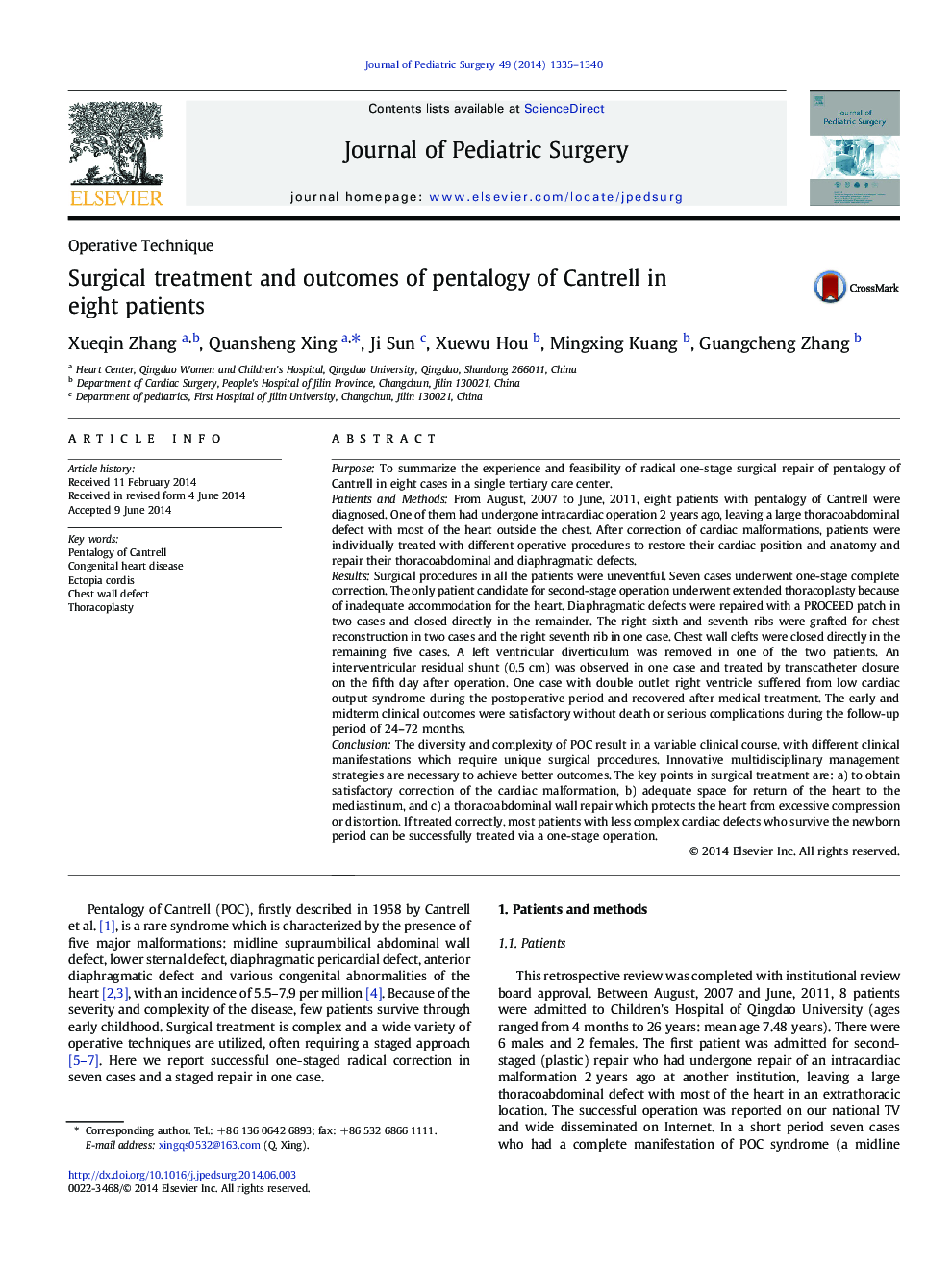| Article ID | Journal | Published Year | Pages | File Type |
|---|---|---|---|---|
| 4155800 | Journal of Pediatric Surgery | 2014 | 6 Pages |
PurposeTo summarize the experience and feasibility of radical one-stage surgical repair of pentalogy of Cantrell in eight cases in a single tertiary care center.Patients and MethodsFrom August, 2007 to June, 2011, eight patients with pentalogy of Cantrell were diagnosed. One of them had undergone intracardiac operation 2 years ago, leaving a large thoracoabdominal defect with most of the heart outside the chest. After correction of cardiac malformations, patients were individually treated with different operative procedures to restore their cardiac position and anatomy and repair their thoracoabdominal and diaphragmatic defects.ResultsSurgical procedures in all the patients were uneventful. Seven cases underwent one-stage complete correction. The only patient candidate for second-stage operation underwent extended thoracoplasty because of inadequate accommodation for the heart. Diaphragmatic defects were repaired with a PROCEED patch in two cases and closed directly in the remainder. The right sixth and seventh ribs were grafted for chest reconstruction in two cases and the right seventh rib in one case. Chest wall clefts were closed directly in the remaining five cases. A left ventricular diverticulum was removed in one of the two patients. An interventricular residual shunt (0.5 cm) was observed in one case and treated by transcatheter closure on the fifth day after operation. One case with double outlet right ventricle suffered from low cardiac output syndrome during the postoperative period and recovered after medical treatment. The early and midterm clinical outcomes were satisfactory without death or serious complications during the follow-up period of 24–72 months.ConclusionThe diversity and complexity of POC result in a variable clinical course, with different clinical manifestations which require unique surgical procedures. Innovative multidisciplinary management strategies are necessary to achieve better outcomes. The key points in surgical treatment are: a) to obtain satisfactory correction of the cardiac malformation, b) adequate space for return of the heart to the mediastinum, and c) a thoracoabdominal wall repair which protects the heart from excessive compression or distortion. If treated correctly, most patients with less complex cardiac defects who survive the newborn period can be successfully treated via a one-stage operation.
